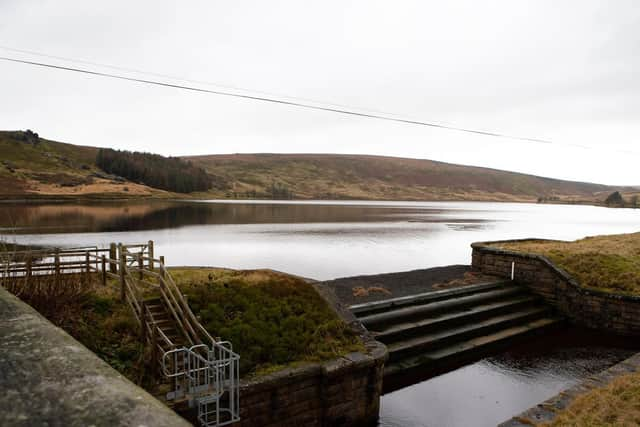How lowering reservoirs in Hebden Bridge could reduce flooding in the Calder Valley
and live on Freeview channel 276
The Boxing Day floods in 2015 had a significant impact on Calderdale and since then Yorkshire Water has been working with partners on a number of projects to help slow the flow of water and reduce flood risk.
Above Todmorden, the landscape is being transforming by a pioneering Natural Flood Management plan involving tree planting, peatland restoration and other natural measures to slow the flow of water.
Advertisement
Hide AdAdvertisement
Hide AdAt the same time Yorkshire Water and the Environment Agency have been working together to assess whether Yorkshire Water’s reservoirs can be used to help reduce flood risk.


Even when a reservoir is full it helps to slow down the flow of water by increasing the time it takes for water to travel from the top of the valley into the downstream rivers.
However, modelling from the Environment Agency suggested that due to the nature of the catchment above Hebden Bridge there could be a bigger reduction in flood risk if reservoir levels could be lowered, leaving some capacity for flood storage during the winter.
Yorkshire Water’s Chief Strategy and Regulation Officer, Nevil Muncaster said: “Lowering reservoirs is not a silver bullet solution to preventing flooding and all agencies need to work together on a wide range of measure to reduce risk, but the data suggests that it could have a positive impact, so it is important that we continue to work to understand both the benefits and potential implications for water resources in the region.
Advertisement
Hide AdAdvertisement
Hide Ad“We’re committed to continuing to work in partnership with others to help reduce flood risk in Calderdale.”
Yorkshire Water first trialled this approach in Winter 2017/18 and when reservoirs were held at 90 per cent capacity for the winter.
The initial trial showed positive results, but further trials were needed to help understand if changing the operations of the reservoir was possible in the long term.
The exceptionally dry summer of 2018 meant the trial couldn’t be repeats as reservoir levels were very low and they didn’t recover to 90 per cent until April 2019.
Advertisement
Hide AdAdvertisement
Hide AdHowever, 2019 has been very wet, making it possible to continue the trial.
Yorkshire Water will be working to hold reservoir levels above Hebden Bridge at 90 per cent when possible, depending on the weather, whilst the Environment Agency will be monitoring the impact downstream.
The Leader of Calderdale Council, Councillor Tim Swift, said: “The trial has come as welcome and positive news after a very wet year. It is hoped that this will pave the way for a more permanent approach to reservoir water levels that will complement the flood alleviation and natural flood management works being delivered in and around Hebden Bridge, helping to mitigate the impacts of our changing climate on the flood risk both locally and downstream.”